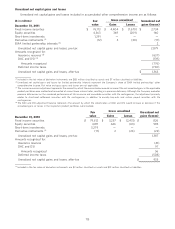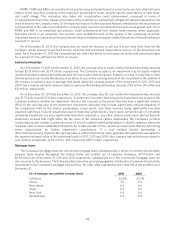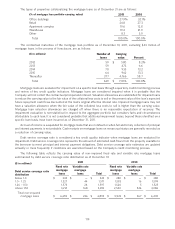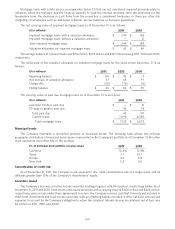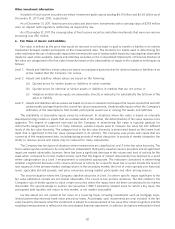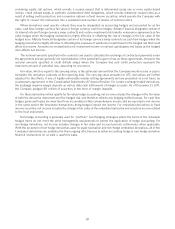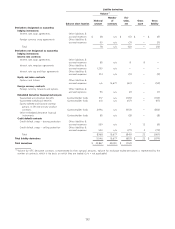Allstate 2012 Annual Report Download - page 209
Download and view the complete annual report
Please find page 209 of the 2012 Allstate annual report below. You can navigate through the pages in the report by either clicking on the pages listed below, or by using the keyword search tool below to find specific information within the annual report.
• Other investments: Free-standing exchange listed derivatives that are not actively traded are valued based on
quoted prices for identical instruments in markets that are not active.
OTC derivatives, including interest rate swaps, foreign currency swaps, foreign exchange forward contracts,
certain options and certain credit default swaps, are valued using models that rely on inputs such as interest
rate yield curves, currency rates, and counterparty credit spreads that are observable for substantially the full
term of the contract. The valuation techniques underlying the models are widely accepted in the financial
services industry and do not involve significant judgment.
Level 3 measurements
• Fixed income securities:
Municipal: ARS primarily backed by student loans that have become illiquid due to failures in the auction
market are valued using a discounted cash flow model that is widely accepted in the financial services industry
and uses significant non-market observable inputs, including estimates of future coupon rates if auction
failures continue, the anticipated date liquidity will return to the market and illiquidity premium. Also included
are municipal bonds that are not rated by third party credit rating agencies but are rated by the National
Association of Insurance Commissioners (‘‘NAIC’’). The primary inputs to the valuation of these municipal
bonds include quoted prices for identical or similar assets in markets that exhibit less liquidity relative to those
markets supporting Level 2 fair value measurements, contractual cash flows, benchmark yields and credit
spreads.
Corporate, including privately placed: Primarily valued based on non-binding broker quotes where the inputs
have not been corroborated to be market observable. Also included are equity-indexed notes which are valued
using a discounted cash flow model that is widely accepted in the financial services industry and uses
significant non-market observable inputs, such as volatility. Other inputs include an interest rate yield curve, as
well as published credit spreads for similar assets that incorporate the credit quality and industry sector of the
issuer.
RMBS, CMBS and ABS: Valued based on non-binding broker quotes received from brokers who are familiar with
the investments and where the inputs have not been corroborated to be market observable.
• Other investments: Certain OTC derivatives, such as interest rate caps and floors, certain credit default swaps
and certain options (including swaptions), are valued using models that are widely accepted in the financial
services industry. These are categorized as Level 3 as a result of the significance of non-market observable
inputs such as volatility. Other primary inputs include interest rate yield curves and credit spreads.
• Contractholder funds: Derivatives embedded in certain life and annuity contracts are valued internally using
models widely accepted in the financial services industry that determine a single best estimate of fair value for
the embedded derivatives within a block of contractholder liabilities. The models primarily use stochastically
determined cash flows based on the contractual elements of embedded derivatives, projected option cost and
applicable market data, such as interest rate yield curves and equity index volatility assumptions. These are
categorized as Level 3 as a result of the significance of non-market observable inputs.
Assets and liabilities measured at fair value on a non-recurring basis
Mortgage loans written-down to fair value in connection with recognizing impairments are valued based on the fair
value of the underlying collateral less costs to sell. Limited partnership interests written-down to fair value in connection
with recognizing other-than-temporary impairments are valued using net asset values.
123




